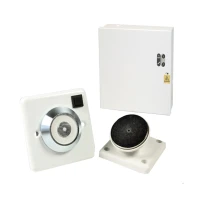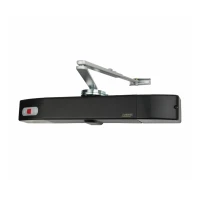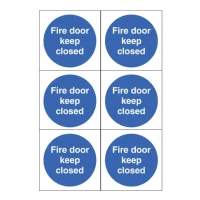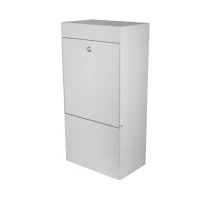
Need assistance?
Need Assistance? Call Us 0330 058 0631





















 Book a service
Book a service

14/10/2025 • by Megan Downing
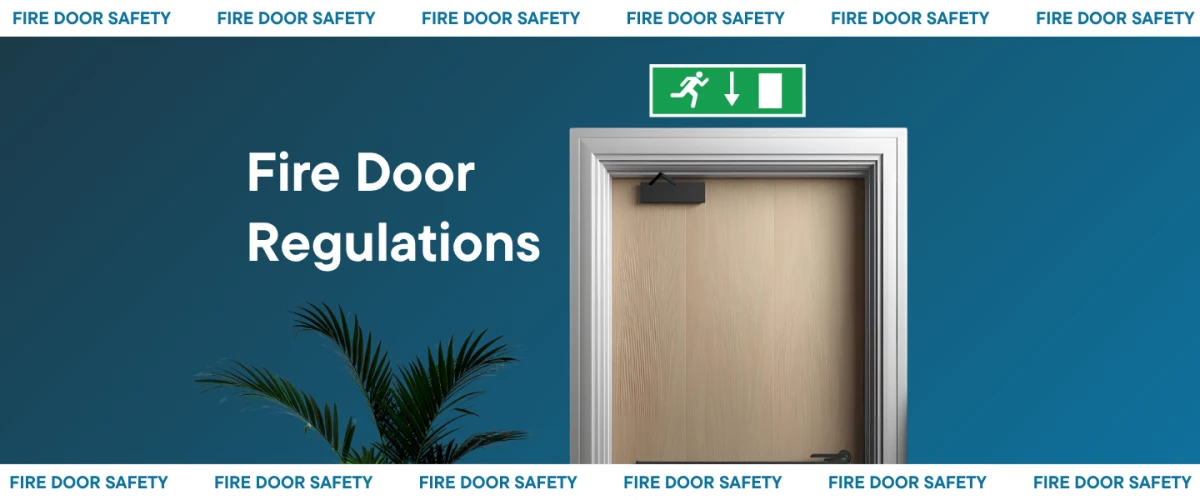
Whether you’re a property owner, facilities manager or simply looking to better understand building regulations, knowing the UK regulations surrounding fire doors is essential. This article provides all the information you need to know, including:
What a fire door is
The purpose of fire doors
How long fire doors are designed to last
How fire doors are constructed
How to identify fire doors in the UK
Inspections and maintenance requirements
Who is responsible for compliance
Best fire door hardware and accessories
By understanding these key areas, you can ensure your fire doors are ready when it matters most.
A fire door is a door that’s specially engineered to withstand fire and smoke for a specified duration of time, which is usually 30 (FD30) or 60 minutes (FD60). Unlike any ordinary internal door, it is made with fire-resistant materials and tested to meet certified performance standards.
The primary purpose of a fire door is to contain the fire and stop it from spreading throughout the premises. By providing a protected barrier, fire doors help conserve safe escape routes, minimise damage, and provide precious time for evacuation and emergency intervention processes.
How long a fire door lasts depends on how much it’s used, its maintenance and the conditions it’s exposed to. A well-maintained fire door should be effective between 10 – 15 years, possibly longer. But if it is evident that the fire door has wear, damage or no longer meets current standards, it should be replaced.
Fire doors are designed to be more robust than standard doors and are typically constructed from heavy materials such as timber, steel, and aluminium. These doors are engineered to endure extreme heat and tested to specific fire ratings such as 20, 30, 45, 60 and 90 minutes. Many fire doors feature a solid timber core, and may also include fire-rated glass panels.
To be able to identify a fire door in the UK, look for the following:
Look out for obvious visual indicators such as “Fire Door – Keep Shut’, or other legal compliances.
Check the door for labels or certification marks of the manufacturers, which may be located on the edge or side of the door leaf labels. These labels ensure the door meets fire resistance and British standards.
In the UK, fire doors are legally required in all non-domestic buildings, including:
· Commercial premises
· Public buildings
· Business properties
· Residential blocks or flats
· Houses in multiple occupation (HMOs)
Following the Regulatory Reform (Fire Safety) Order 2005, building operators in England and Wales are required to appoint a ‘Responsible Person’ to manage all fire safety precautions, including fire doors.
How often fire doors should be checked depends on their location.
· In multi-occupied residential buildings, fire doors should be checked at least every 3 months.
· In commercial buildings, fire doors are recommended to be checked every 6 months, but check your policy.
Fire Protection Shop offers a wide range of fire door accessories to support full compliance and safety. From certified signage to essential hardware, we help ensure that both the door and its components perform correctly in an emergency.
Fire doors can be painted with regular paint; however, it is advised to be cautious of the thickness of the paint you use so as not to affect in any way the efficiency of the door.
Fire doors should be fitted with fire door closers to ensure they close fully when required. A fire door left open cannot provide the same protection, making the closer crucial to its overall performance in an emergency.
The maximum gap under a fire door should usually be between 8-10 mm between the floor and the bottom edge of the door.
Typically, your landlord or building owner will be legally responsible for fire doors in common areas of your flat.
The length of time a fire door contains fire or smoke is dependent on its certified rating. For example, an FD30 fire door is designed to provide at least 30 minutes of protection, and an FD60 fire door is designed to offer at least 60 minutes.
We use cookies to enhance your site experience. Choose your preferences below.


